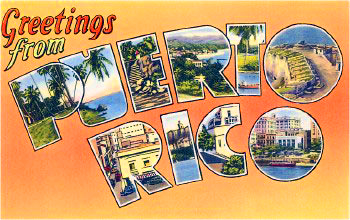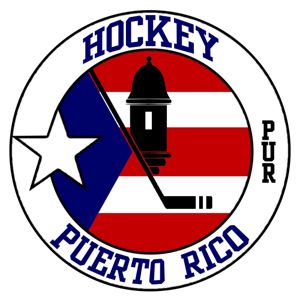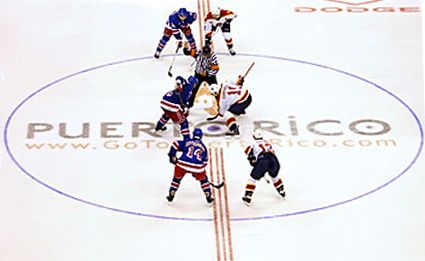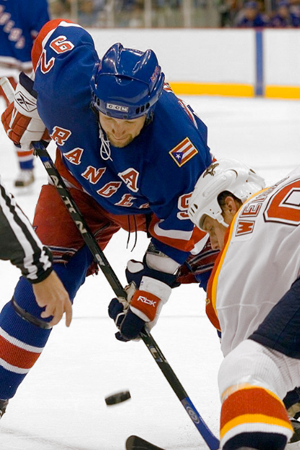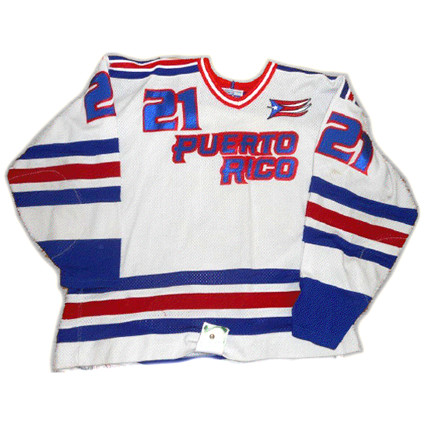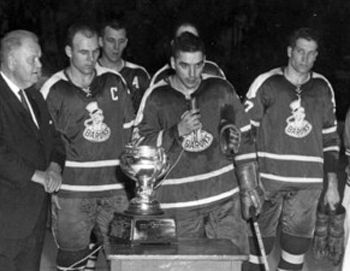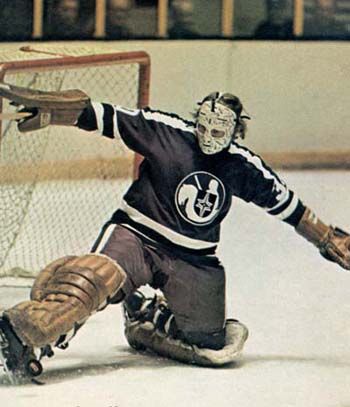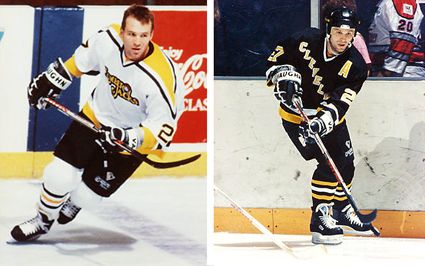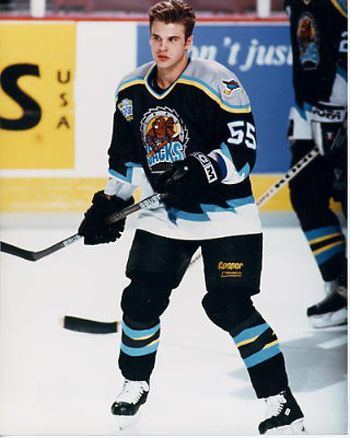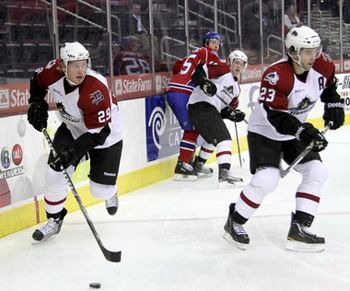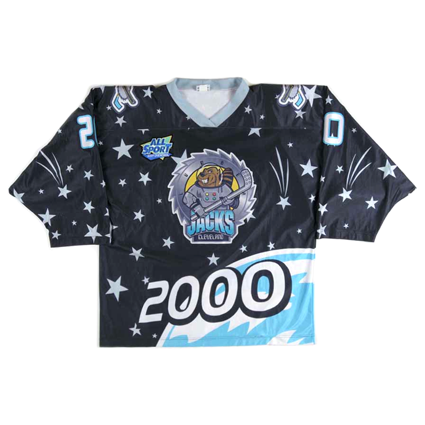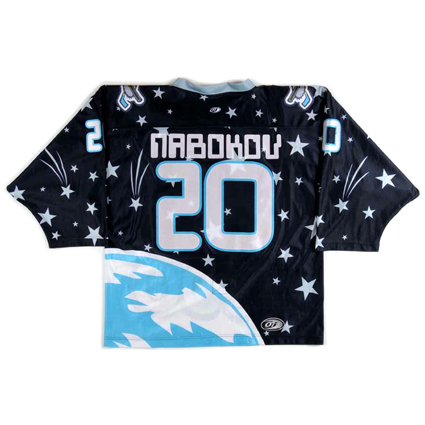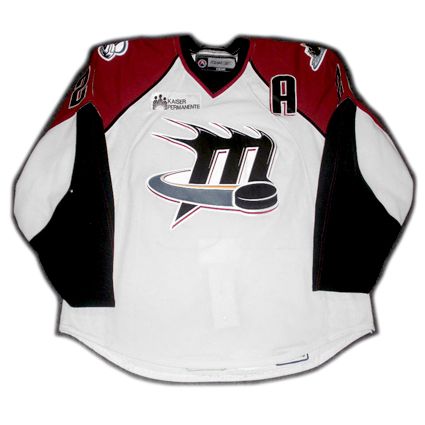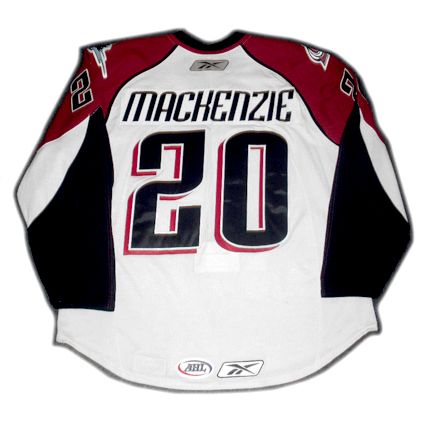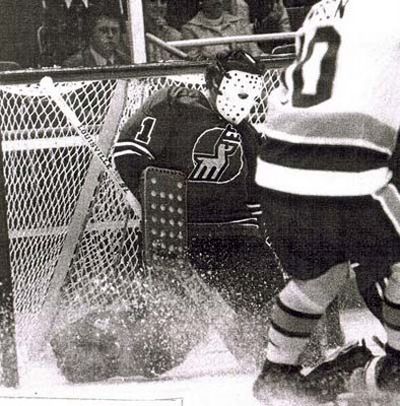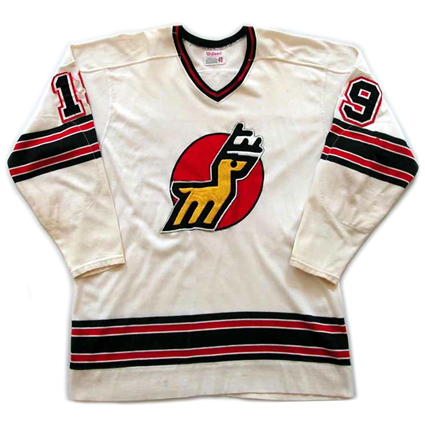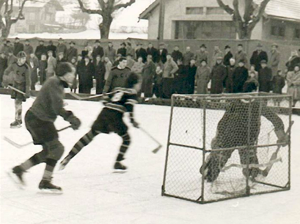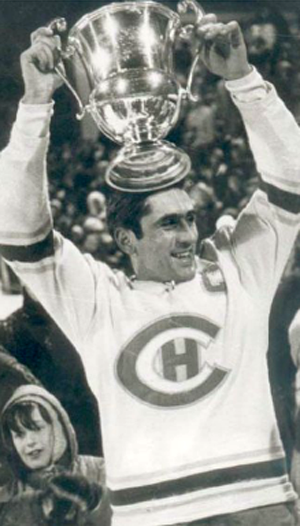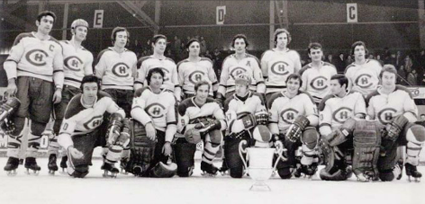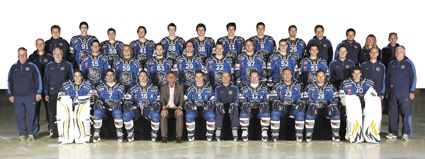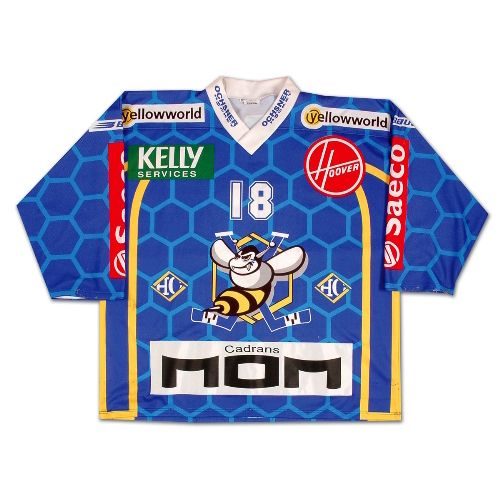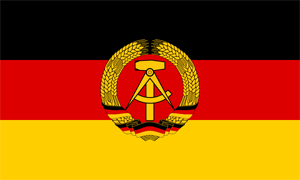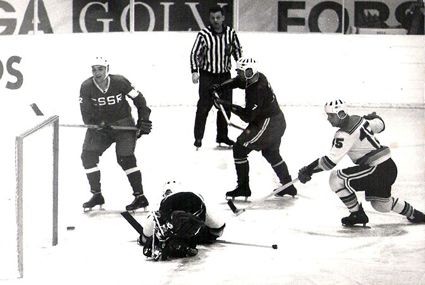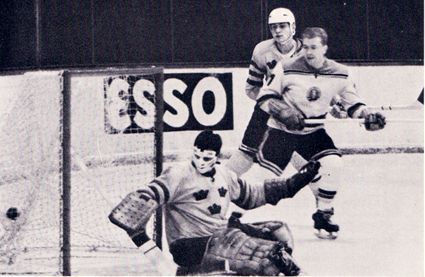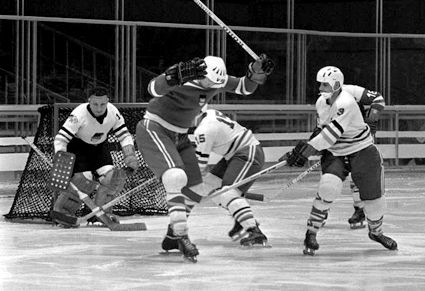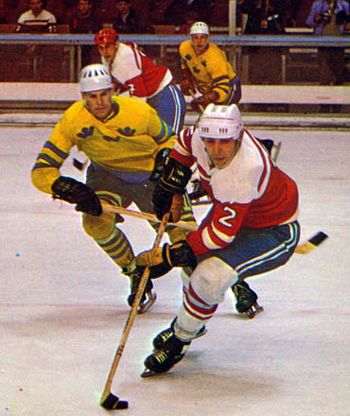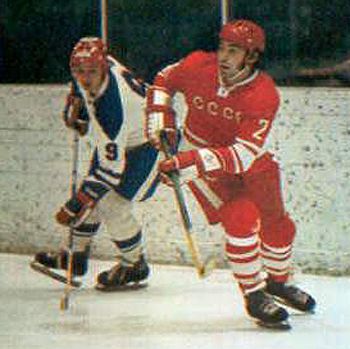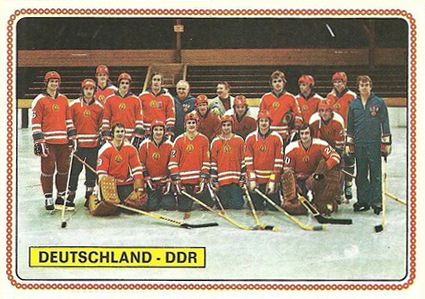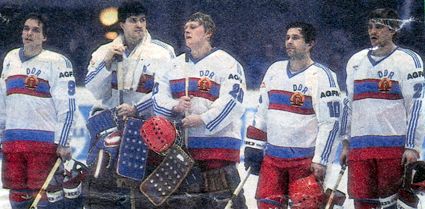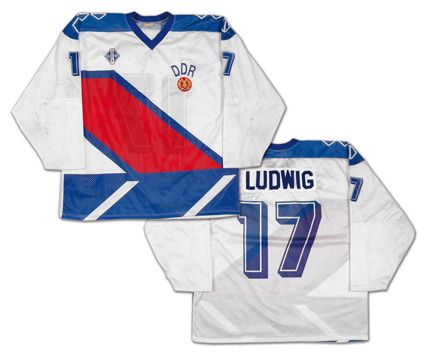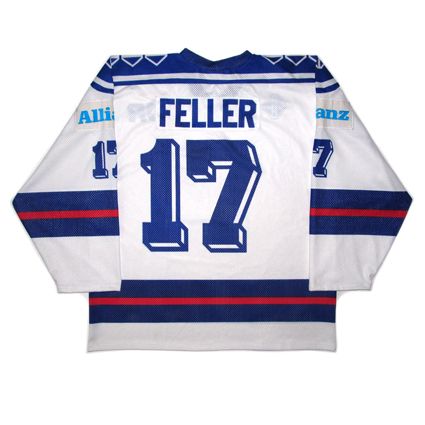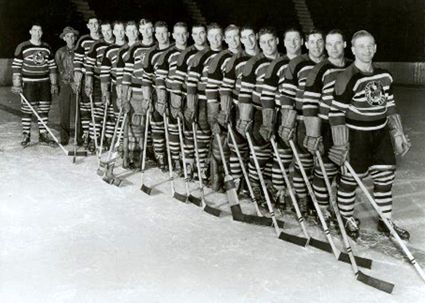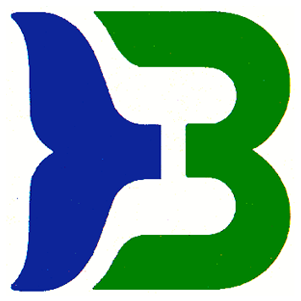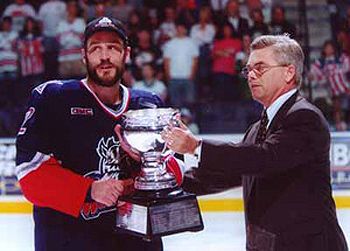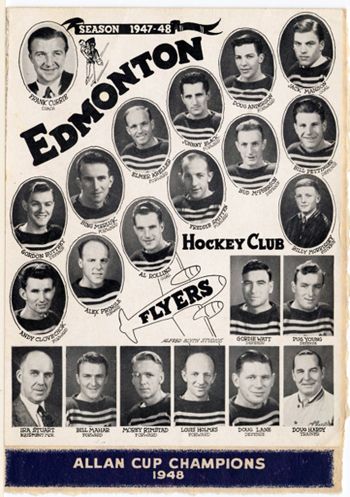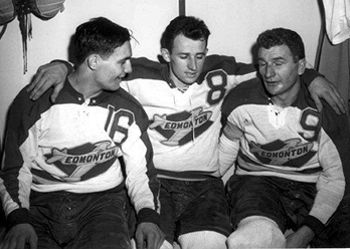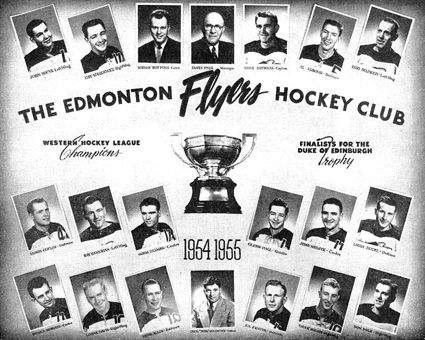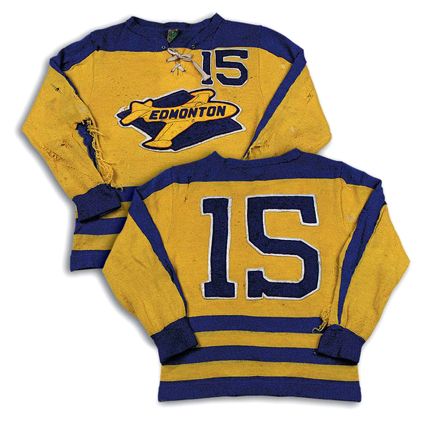Saturday, July 21, 2012
2006-07 Puerto Rico Roberto Clemente Jersey
July by the Numbers visits the island nation of Puerto Rico for jersey #21.
Really.
Hockey Puerto Rico was formed in 2004 with the opening of the Aguadilla Ice Skating Arena on the island's west coast. The first team formed was the Tainos, with the name taken from the indigenous Indians who greeted Christopher Columbus on his first voyage to the new world.
The biggest event in Puerto Rican hockey by far was the September 23, 2006 NHL exhibition game between the Florida Panthers and "host" New York Rangers held in the capital of San Juan, which was won by the Rangers 3-2 in a game played at the 16,500 seat Jose Miguel Agrelot Coliseum.
The Rangers wore Puerto Rican flags during the game to mark the occasion, certainly one of the more unusual patches ever to grace an NHL jersey.
Panthers defenseman Joel Kwiatkowski said. “Everyone I tell about this trip just shakes their head. They can’t believe we’re playing in Puerto Rico. I think this is great for the game. If there’s hockey in Florida, why not Puerto Rico and the Caribbean?"
At the grass roots level, local pick-up games were held starting in 2004, but ongoing difficulties with the skating arena management has seen a loss of ice time, which threatens to kill off the once growing games held there on a regular basis. For more on the battle the local hockey organizers have been facing, please visit this story on the IIHF website.
Today's featured jersey is a 2006-07 Puerto Rico Roberto Clemente camiseta. It's based on a 1994 New York Rangers blank jersey which was then crested as a Puerto Rico jersey, including the "Orgullo" (local pride) flag and the #21 in honor of Puerto Rican baseball legend Roberto Clemente.
Bonus camiseta: Today's bonus jersey is a 2010-11 Puerto Rico Roberto Clemete camiseta which was created by starting with the template for the striping used by the Jacksonville Barracudas.
It has the addition of the Puerto Rico flag on one sleeve and El Morro, the fort which overlooks the entrance to San Juan's harbor on the other
In today's video section, footage of the Rangers exhibition game against the Panthers in Puerto Rico in September of 2006.
Labels:
Puerto Rico
Friday, July 20, 2012
1999-00 Cleveland Lumberjacks Evgeni Nabokov Jersey
July by the Numbers travels to the future for jersey #20!
Before we visit the future, we must visit the past in order to understand where we are going by looking back at where we've been. The history of hockey in Cleveland can be traced back to the Cleveland Athletic Club, the first winners of the MacNaughton Cup in 1914.
The first professional team to call Cleveland home was the Cleveland Indians of the International Hockey League, who relocated from Kitchener, Ontario in 1929 where they were known as the Dutchmen. They were rather successful their first season, going 24-9-9 and won the league championship, defeating Buffalo 3 games to 1. That would be the high point for the Indians, as they would slip down the standings, finishing last or next to last their final three seasons before being renamed the Cleveland Falcons in 1934.
Moe Roberts of the Cleveland Indians hockey team
The Falcons would play two seasons in the IHL, which then merged with the Canadian American Hockey League to form the new International-American Hockey League for the 1936-37 season.
Tommy Cook of the Cleveland Falcons
After one more year as the Falcons, the franchise was again renamed, this time as the Cleveland Barons for the 1937-38 season. The Barons would win the Calder Cup as IAHL champions in 1939 before the league shortened it's name to simply the American Hockey League for the 1940-41 season.
The Barons would provide Cleveland with it's longest, most stable and successful period of hockey in the city's history, playing 36 seasons, during which time they won nine championships, those coming in 1939, 1941, 1945, 1948, 1951, 1953, 1954, 1957 and 1964 in front of standing room only crowds in what was the Golden Age of Cleveland hockey. So successful was the franchise, that at one point in the early 1950's ownership tried to apply for entrance into the National Hockey League and so confident their owner that the Barons issued a challenge to the NHL for the right to play for the Stanley Cup!
The Cleveland Barons accepting another of their nine Calder Cups
Eventually, ownership of the franchise passed to Nick Mileti, who became the owner of the Cleveland entry in the new World Hockey Association in 1972. The combination of the competition for the fans of Cleveland, who now had a major league team to support for the first time, and the dramatic increase in competition for players against not only the new WHA, but the expanding NHL, spelled the end for the Barons, as Mileti moved the team to Florida in the middle of the 1972-73 season.
Mileti's new WHA club, the Cleveland Crusaders, made a splash by luring goaltender Gerry Cheevers away from the Stanley Cup champion Boston Bruins.
Gerry Cheevers
The team had a good first season, but moderate attendance for four seasons, combined with issues with their new arena located too far from the city and the impending arrival of the relocating California Golden Seals of the NHL, sent the Crusaders out of town after just four seasons.
The 1974-75 Cleveland Crusaders of the WHA
The club that drove the Crusaders out of town revived the Cleveland Barons name, but did not come anywhere near duplicating their original Barons success, as they not only brought all the competitive issues the Golden Seals suffered on the ice with them from California, but compounded those by moving into the problematic Richfield Coliseum. The doomed Barons only lasted two troubled seasons, finishing with a 47-87-26 record overall.
Goaltender Gilles Meloche anchored the NHL's Cleveland Barons
Cleveland would be without professional hockey until the 1992-93 season when the Muskegon Lumberjacks of the IHL relocated to Ohio and were the top affiliate of the Pittsburgh Penguins.
The Lumberjacks sharp jerseys based on the Penguins jerseys of the early 1990's
The Lumberjacks had five winning seasons in their nine years of existence., including four seasons of 90 points or more, but managed only one deep playoff run, that coming in 1997, when they reached the third round of the Turner Cup playoffs. At the end of the 2000-01 season, the IHL, which had been around since 1945, collapsed due to a combination of expanding too quickly and not nearly enough teams having affiliations with NHL franchises. While 6 of the 11 IHL franchises were accepted into the AHL, Cleveland was not among those, and the Lumberjacks run came to an end.
The trendy late 90's teal and black look of the Lumberjacks, complete with Beaver logo and buzzsaw waist stripe
Cleveland was not left without hockey though, as the San Jose Sharks of the NHL purchased their AHL affiliate, the Kentucky Thoroughblades, and relocated them to Cleveland, where they revived the Cleveland Barons name once again. While the Lumberjacks had averaged between 8,200 and 9,000 fans their first six seasons, their attendance had dropped to 4,200 in their final season, which proved to be the equal of the new Barons best season, due in part to the team's struggles on the ice, as they had only one winning season in five years, winning less than 30 games three times and only qualifying for the playoffs once, that being a first round exit.
The Cleveland Sharks logo
When the Sharks relocated the franchise to Worcester, Massachusetts for the 2006-07 season, Cleveland was left without a team for just one season before the inactive Utah Grizzlies AHL franchise was purchased and moved to Cleveland, where it was named the Lake Erie Monsters where they remain today as affiliates of the NHL's Colorado Avalanche. Unlike several of their immediate predecessors, the Monsters have enjoyed a steady increase in attendance over their now five seasons and hope to maintain a steady presence as they write their chapter in the history of hockey in Cleveland.
The Lake Erie Monsters in action
Today's featured jersey is a 1999-00 Cleveland Lumberjacks Evgeni Nabokov jersey. This wild jersey is emblematic of the many special occasion jerseys seen in the minor leagues. Special one-off designs can often be seen on various holidays that occur during the hockey season, such as Halloween, Christmas, St. Patrick's Day and Valentine's Day in particular which often results in the players having to sacrifice their dignity as they are forced to wear pink jerseys with red hearts.
Other club's will create a special jersey simply to go along with a special themed promotion, such as jerseys made to look like tuxedos, cowboys, pirates, prison uniforms and guards, cows or the clothing worn by Ronald McDonald, Don Cherry, Bob Uecker and Michael Jackson, which included the players each wearing one white glove!
Tributes and awareness themes have also spawned many sets of unique jerseys, such as those for military tribute or breast cancer awareness nights, with the jerseys regularly auctioned off to the fans following the game.
In 1999 the approach of the Millennium occupied the minds of many, particularly the threat of computers world wide crashing due the "Y2K" scare - to not being able to recognize the difference between "2000" and "1900" due to only having two digits to signify the year.
Major League Baseball recognized the upcoming flipping of the calendar with the notorious "Turn Ahead the Clock" promotion, wearing jerseys from twenty some years in the future, and the Lumberjacks also got into the spirit of the event with their own Millennium special occasion jersey, filled with futuristic imagery and decorated with the inspired choice of the same font used on bank checks, "MICR".
Bonus jersey: Today's bonus jersey is a 2008-09 Lake Erie Monsters Aaron Mackenzie jersey from the most recent professional team to call Cleveland home. This jersey illustrates the modern template and lines of the newest generation of Reebok designed jerseys, which have moved away from the classic horizontal striping of hockey jerseys of the past.
While the Monsters regularly wear their modern jerseys, they have also worn AHL Baron's throwback jerseys as well as WHA Crusaders throwbacks in recognition of the team's that built a foundation of Cleveland hockey history.
Today's video section begins with the Cleveland Baron's star Fred Glover, and AHL legend and one of the best players you have never heard of.
Here is some great newsreel footage of Glover scoring his 400th career goal, which also includes future NHLer John Ferguson scoring a hat trick as the Barons squeak out a 13-2 win over the rival Pittsburgh Hornets.
Thursday, July 19, 2012
1974-75 Michigan Stags Alain Caron Jersey
July by the Numbers makes a stop in Detroit, Michigan for it's brief entry in the WHA.
The Los Angeles Sharks were one of the original WHA clubs, formed in 1972. Following their second season, they were sold to new owners, who relocated the team to Detroit and renamed them the Michigan Stags. They were hoping to take advantage of the NHL's Detroit Red Wings current losing ways (one playoff appearance in the previous eight seasons) and develop a rivalry with the Toronto Toros.
Gary Desjardins in net for the Stags
Keeping the red and black color scheme of the Sharks, and hoping to fill the Cobo Arena's 12,000 seats, things did not work out as planned. The Stags carried over the poor play on the ice of the last placed Sharks and could not secure a TV deal either, as only one Stags game was ever televised, their season opener in Indianapolis, which was unfortunately played at the same time as Game 5 of baseball's 1974 World Series.
October 12, 1974 - the Michigan Stags home opener at Cobo Arena
After winning their first game 4-2, the club showed it's true colors, losing 11 of their next 12 games, killing any hope of being seen by the fans as a superior product to the downtrodden Red Wings. When attendance averaged 3,000 per game, the club quickly ran into money problems which forced the trade of star Marc Tardif to the Quebec Nordiques in early December.
Six weeks later the Stags were no more, with the owners folding the team on January 19th with a poor 18-40-3 record after only 61 games played, even before legendary Detroit Red Wing Gordie Howe could return to Detroit for a scheduled game in February, which certainly would have resulted in a Stags attendance record had the club only lasted long enough.
With the league now as owners, a week later the team was resurrected and placed in Baltimore, now known as the Blades, where they had to compete with the new Washington Capitals of the NHL. The Blades finished the remaining 17 games of the schedule, going a dismal 3-13-1, prior to folding after the season.
Today's featured jersey is a 1974-75 Michigan Stags Alain Caron jersey. The Stags used the same basic jersey as their predecessor Sharks, only with a new, nicely executed logo, with the Stag's legs forming a subtle "M" for Michigan. While not the most dynamic logo ever, it was clean and graphic and has aged very well.
Today's audio file is some classic Stags radio play-by-play action from a game versus the New England Whalers in the 1974-75 season.
Labels:
Michigan Stags
Wednesday, July 18, 2012
2001-02 HC La Chaux de Fond Xavier Durini Jersey
July by the Numbers returns to the land of crazy hockey jerseys, Switzerland. What they lack in size, they make up for in brashness.
HC La Chaux-de-Fonds was founded back in 1919 as both a hockey and skating club, with the hockey club separating into it's own entity in 1925.
They first won a regional title in the western French speaking part of Switzerland in 1939. They later were a charter member of the National League B in 1948, winning their first championship in 1951.
HC La Chaux-de-Fonds playing outdoors in 1946
They were promoted to the National League A in 1955, but were relegated back to the National League B in 1958. It would take HC La Chaux-de-Fonds until 1965 to return to the National League A following their second NLB title, but once back in the NLA, they rose to a level of dominance which saw them win six Swiss consecutive Swiss national championships, those coming from 1968 through 1973.
Captain René Huguenin celebrating their sixth
consecutive championship in 1973
During that period of the club's greatest success, they celebrated their 50th anniversary in 1969, the same season their outdoor rink, built in 1953 and only the sixth rink in Switzerland with artificial ice, had a roof installed for the first time.
The 1969 championship club
They club fell down to the National League B once again in 1979 before dropping to the Premier League, the third level of Swiss hockey, in 1984. Two seasons later they were back in the National League B, but sent back down once again in 1989.
They began their rise back up the ladder once again with a promotion in 1993 and a spot on the National League A playoff promotion series at the end of the season.
1994 saw the 75th anniversary of the club and a second time participating in the promotion playoffs.
Finally, at the end of the 1995-96 season, Chaux-de-Fonds won their third NLB title and were promoted to the NLA after an absence of 17 seasons. Their stay lasted two seasons before being sent back down to the NLB once again.
They competed for promotion again in 1999 and 2000 after their fourth NLB championship before a one year promotion in 2000-01, which only lasted one year before being immediately sent back down once again. A wild up-and-down period ensued, as the club were runners up in 2002, were forced to play to remain up in the NLB in 2003, and not only survived, but rebounded to play for a possible promotion to the NLA the very next season!
Since then they have remained in the NLB, participating in the promotion playoffs again in 2005 and 2007.
The club has retired four numbers in it's history, including #10 for Michel Turler, who was a member of Chaux-de-Fonds six consecutive championships, leading the league in scoring on four occasions. He played 110 international games for Switzerland, scoring 55 times, including playing at the 1972 Olympics where he was Switzerland's top goal scorer with 4 goals in 5 games.
No, it's not the Montreal Canadiens, it's Turler playing for HC La Chaux de Fond while they wore jerseys identical to the Canadiens during the early 1970's!
#2 has also been retired for René Huguenin, also a member of the 1972 Olympic team, as well as #17 for Gaston Pelletier and #14 Guy Dubois.
The club currently participates in the Swiss National League B, the second division of Swiss hockey, and it's roster is made up of a majority of semi-professional players, even going so far to solicit employers on their website who would wish to hire their players on a part-time basis!
The 2011-12 HC La Chaux-de-Fonds club
Today's featured jersey is a 2001-02 HC La Chaux de Fond Xavier Durini jersey. A wild affair, this loud design features no less than 14 advertisements, as if it weren't busy enough with the honeycombed background pattern!
In the often seen European style, the player's name takes a back seat to the sponsorship logo, which is placed above the number on the back, relegating the player's name to below the numbers.
We were unable to find a way to embed a visually exciting documentary of the glory days of HC La Chaux-de-Fonds, but it's 18 minutes of historical footage can be found at this link. Even if you do not want to invest 18 minutes of your day, we recommend at least checking out the first few minutes to get a taste of this great vintage video footage.
Labels:
HC La Chaux-de-Fonds
Tuesday, July 17, 2012
1988 East Germany Andreas Ludwig Jersey
With the division of Germany in the aftermath of World War II into Soviet controlled East Germany and West Germany, which was supported by Great Britian, France and the United States, on October 7, 1949, it necessitated separate national hockey team programs.
The flag of the German Democratic Republic,
otherwise known as East Germany
The East Germans made their debut on January 28, 1951 in a 8-3 loss to Poland. It would take them until 1956 to make their debut at the World Championships, which they did in style, winning the "B" Pool tournament to earn promotion to the Top Division their first time out.
The East Germans were also represented at the 1956 Olympics by the Unified Team of Germany, a single team of athletes which competed at the Summer and Winter Olympics in 1956. However, in the case of the Winter Olympic hockey tournament, the East German and West German teams were not combined into a single representative team, but instead the two sides faced off against each other prior to the Olympics to determine which one team would represent Germany as a whole, so rather than being a unified team, it served the opposite effect in the case of hockey, pitting the two sides against each other!
For 1956, the West Germans won 7-3, leaving the East Germans out of the Games.
In 1957, the World Championships were held in the Soviet Union for the first time, and due to the Soviets occupying Hungary at the time, the United States, Canada, Norway, West Germany, Switzerland and Italy all stayed home in protest. With the lack of several of the favorites, East Germany was able to finish 5th thanks to wins over Japan, Poland and Austria.
Despite their success in 1957, they did not participate in the 1958 World Championships, but returned in 1959 for a 9th place finish. After being drubbed by the Soviet Union, the United States and Norway in the First Round, being outscored 21-6, they held their own in the Consolation Round, beating Poland 5-1, Switzerland 8-0 and Italy 8-6, but lost to West Germany and Norway for a second time.
East Germany was again represented by the Unified Team of Germany at the 1960 Olympics, only as in 1956, the West Germans prevailed in the qualification matches by scores of 5-2 and 5-3 and won the right to represent Germany as a whole.
After not participating in 1961 or 1962, the East Germans became regulars at the World Championships from 1963 on. Facing the might of the hockey powers of the world, the East Germans finished 6th (with a win over Finland and a tie against the United States) in 1963.
East Germany vs Czechoslovakia in 1963
The following year was another Olympic year, and East Germany was again represented by the Unified Team of Germany, but for a third time it was the West Germans who won the right to participate following a 4-3 win in their second game after a 4-4 tie in the first game gave the East Germans hope of participating in the Olympics for the first time.
East Germany next placed 5th (With wins over the United States, Norway and Finland) in the 1965 World Championships, 5th (with wins over Sweden (despite giving up 74 shots on goal!), Poland and Finland) in 1966 and 7th (with a win over West Germany and a tie with the United States) in 1967.
East Germany scoring against Sweden in 1965
For the 1968 Olympics, both East and West Germany competed as separate nations for the first time since the division of Germany. While they had met several times during the World Championships, this would be the only time the two nations would face each other at the Olympics, with the West prevailing 4-2.
East Germany in their only Olympic meeting against West Germany in 1968
With that loss, the East Germans finished in last place with an 0-7-0 record at the Olympics (which also served as the World Championships in Olympic years) and were relegated to Group B for the 1969 World Championships.
East Germany, wearing red instead of their customary blue,
faces Sweden at the 1968 Olympics
It was at this point in 1969, following their failure at the Olympics, that the East German authorities examined their national sporting programs, with a focus on maximizing their greatest return on investment, with their main focus being winning medals at the Summer and Winter Olympics.
As a result of this scrutiny, it was determined that the country should focus on individual sports, as a single track and field athlete, swimmer or speed skater could produce multiple gold medals at the Olympics, while team sports like water polo or ice hockey required many players, special facilities (such as pools and skating rinks) and special equipment (much of which needed to be imported), all resulting in higher operating costs - and all for the sake of hoping to win just a single medal, which seemed unlikely for the hockey program in the face of dominant competition from the Soviet Union, Canada, Czechoslovakia and Sweden.
This thinking, called the Lestungssportbeschluss Directive, resulted in ice hockey being relegated to "Sport 2" status by the East German sports federation, which resulted in East Germany never appearing in another Olympic hockey tournament and the immediate reduction in funding for it's domestic hockey league, which was left with only two clubs, SC Dynamo Berlin and SG Dynamo Weisswasser, to produce top level players for the East German National Team from 1971 on, with those two clubs only being spared because the head of the East German secret police, the Stasi, being an avid hockey fan.
In the 1969 World Championships B Pool, East Germany dominated with a perfect 7-0 record, defeating Poland, Yugoslavia, West Germany, Norway, Romania, Austria and Italy, scoring 11 goals three times and 13 once on their way to a final 62-13 goal differential, which saw them promoted back to the "A" Pool for 1970.
Back in the A Pool in 1970, they found the going much tougher, as they went 2-7-1, managing wins over Finland and Poland as well as a tie with Poland in their other meeting.
For 1971, the East Germans declined to participate in Pool A, and instead competed in Pool B, where they finished 3rd with a competitive 5-2-0 record. In 1972, the World Championships began to be held every year, regardless of it being an Olympic year. Still in Pool B, the East Germans again placed 3rd from a 4-2-0 mark.
As a result of the decision to reduce ice hockey to Class 2 status, the East Germans declined to send a team to the 1972 Olympic games, and would never again compete in the Winter Olympic hockey tournament.
The 1973 World Championship tournament saw the East Germans rise to the challenge despite the lack of support from their own government, waltzing to a 7-0 record with wins over the United States, Yugoslavia, Romania, Austria, Japan, Switzerland and Italy. Almost in spite of themselves, they were again headed back to the A Pool!
Once more swimming with the sharks proved difficult, and East Germany went 1-8-1, defeating Poland 5-3 in their first meeting and playing to a 3-3 tie in their second game of the double round robin schedule. Unfortunately for the East Germans, Poland managed two ties, their other coming against Finland, and the Poles were awarded a 5-0 win over Sweden when Swedish player Ulf Nilsson tested positive for a banned substance after Sweden had won easily by a score of 4-1. The 2 points Poland received in the standings was enough to leap them over East Germany, despite not having beaten them on the ice, resulting in the East Germans being relegated back to Pool B for 1975.
East Germany facing the Soviet Union in 1974
This began a series of promotions and relegations for the East Germans, as they were in the no man's land of international hockey, too good for the B Pool and not strong enough to survive in Pool A. They won the B Pool in 1975 with a 6-1 record, scoring 41 and giving up just 18 in 7 games to gain promotion back to the A Pool for 1976, where they were relegated after a 2-7-1 mark after losing Consolation Round games to Poland and Finland along with a tie against West Germany.
Back in Pool B for 1977, they were once again the dominant side, breezing to a 8-0 record while outscoring the competition 57-16, which only set themselves up for relegation from the A Pool in 1978 when they again faltered in the Consolation Round with ties against West Germany and the Untied States and a loss to Finland sealing their fate yet again.
A new format of play in 1979 saw them win Group 1 easily with a 4-0 mark, but a one goal loss to the Netherlands saw them miss out on promotion back to Pool A for 1981, as the World Championships were not held in 1980 due to the Olympics, which did not count as the World Championships as they had from 1924-1968.
The East German National Team in 1979
A down performance in 1981 saw the East Germans place 4th with a 4-2-1 record but they were again on top of the B Pool in 1982, defeating Norway 10-1 and China 13-7 on their way to a 6-0-1 record to earn their sixth promotion to the A Pool.
Wins over Italy and Finland in the First Round and again in the Consolation Round were enough to ensure their survival in the A Pool for consecutive tournaments for the first time since 1966, again, this coming from a country whose top national league consisted of a mere two clubs to draw national team players from.
Their participation in Pool A for a second consecutive time would have to wait until 1985, as 1984 was an Olympic year.
The 1985 World Championships were the East Germans last hurrah, as they only managed a pair of ties against Finland and the United States, sending them back down to the B Pool, where they would play out the remainder of their days as a separate nation, with a 3rd place finish in 1986 and 5th place finishes in 1987, 1989 and 1990.
The East German National Team at the 1985 World Championships
With East and West Germany reunited in time for the 1991 World Championships, only two players from East Germany would be picked to represent the reunified German National Team, goaltender Rene Bielke and forward Mario Naster. No players from the former East Germany were members of the 1992 Olympic team, but two defensemen from the East, Torsten Kienass and Jorg Handrick would dress for Germany at the 1994 Olympics.
Today's featured jersey is a 1988 East Germany Andreas Ludwig jersey. While West Germany's jerseys were based on the red, black and yellow colors of the German flag, and unlike many of the communist teams who wore red jerseys (the Soviet Union, Czechoslovakia, Poland), the East Germans wore the surprising color combination of blue accented with red and white for most of their existence.
Today's featured jersey is one of the earliest examples of a jersey made by the Finnish company Tackla, as evidenced by the choice of font for the numbers, which would soon change to a block front with a 3-D drop shadow for the remainder of their time as supplier to the IIHF.
Of note, the "DDR" initials on the front of their jerseys stands for Deutsche Demokratische Republik, which translates to German Democratic Republic, often abbreviated as GDR in English.
photo courtesy of Classic Auctions
Bonus jersey: Today's bonus jersey is a 1989 East Germany Jens Feller jersey as worn during the 1989 World Championships B Pool. This jersey was worn in the 1989 World Championships B Pool, Feller's only appearance for the East German National Team.
This jersey has an extremely minimalist style, with only simple striping on the arms and waist and is devoid of any traditional main cresting, with only the Tackla branding on the upper right chest and the DDR initials and East German coat of arms on the left chest in the style of a soccer jersey, leaving the rest of the body devoid of any traditional main logo.
Today's video section contains footage from the 1985 World Championships, where the East Germans faced off against Czechoslovakia, with the East Germans wearing red for one of the few times in their history.
Labels:
East Germany
Monday, July 16, 2012
2003-04 Hartford Wolf Pack Paul Healey Jersey
July by the Numbers makes it's way to Connecticut for jersey #16.
Founded in 1926 as the Providence Reds, the club played in the Canadian-American Hockey League, which was renamed the International-American Hockey League in 1936 and finally shortened to the American Hockey League in 1940. The club remained the Providence Reds for 50 years, winning Calder Cups in 1938, 1940, 1949 and 1956, before a name change for one season to the Rhode Island Reds prior to relocating for the first time for the 1977-80 season.
The 1948-49 Calder Cup champion Providence Reds
The team's new home was Binghamton, New York where they were named the Binghamton Dusters in reference to their location in Broome County. After three seasons, the club changed it's name to the Binghamton Whalers to reflect it's affiliation with the NHL's Hartford Whalers. In a clever bit of thinking, Binghamton took the Hartford Whalers "W" logo and turned it on it's side, creating a "B", which not only illustrated it's ties to the parent club in Hartford, but saved the team from having to design a new logo of it's own!
The Binghamton Whalers clever recycling of the Hartford Whalers logo
Following the 1989-90 season, the franchise was sold to the New York Rangers, who simply renamed the team the Binghamton Rangers and carried on for seven more seasons until the franchise was on the move for a second time, seizing the opportunity to immediately fill the vacancy created when their former parent club, the Whalers, left Hartford to become the Carolina Hurricanes.
The early 1990's was a time when minor league franchises began to realize the value of having their own unique identities, rather than simply adopting the name of their parent club, as had long been the case for many clubs, particularly those in minor league baseball. This opened the door for an increase in revenues from selling their own branded merchandise, such as caps, shirts and jerseys, and creating a stronger connection with their local fanbase, as they could now avoid having to change their name on a periodic basis as their affiliations evolved over time.
With the new approach to independent name for minor league clubs, the franchise was christened the Hartford Wolf Pack for the 1997-98 season following a name the team contest, with the name Wolf Pack being a reference to a class of submarines, as Connecticut is home to the main builder of submarines as well as the US Navy's primary submarine base.
The club got off to a strong start in Hartford, totaling 99 points in their first season as well as making it to the Calder Cup Semifinals in their first try.
Two seasons later the Wolf Pack led the AHL with a 49-22-7-2 record to lead the league with 107 points as goaltenders Milan Hnilicka and Jean-Francois Labbe combined to hold opponents to just 198 goals, the only team to allow less than 200. The Wolf Pack then eliminated Springfield, Worcester and Providence to reach the finals, where they defeated the Rochester Americans to capture the Calder Cup in their third season in Hartford as Derek Armstrong was named the playoff MVP.
Ken Gernander accepts the 2004 Calder Cup
With a strong supply of players from the Rangers organization, the Wolf Pack was a consistently strong club, with just one season with less than 95 points over the next nine seasons, which included winning Atlantic Division titles in 2003-04 and 2008-09, including four seasons of over 100 points, with their 110 points in 2007-08 setting a team record, thanks to 50 wins in 80 games.
Playoff success would remain elusive however, with first or preliminary round exits in 2001, 2003, 2005, 2007-2009 and only one trip to the semifinals in 2004, which came up short in a seventh game.
Their average attendance their first two seasons in Hartford was 7,100 compared to 12,500 during the final few seasons of the Whalers. Despite the continued and consistent competitive level of play, their attendance numbers were one long, slow nearly uninterrupted decline, drifting down from 7,100 the year following their championship to 6,700 to 5,800 by 2003. It sank to 4,500 in 2007 and 4,188 in 2009-10 after which the club was sold to Whalers Sports and Entertainment.
Bizarrely, the team started the 2010-11 season still known as the Hartford Wolf Pack, playing 22 games from early October until their return from a five game road trip when the club was re-branded as the Connecticut Whale beginning with their game on November 27th against Bridgeport!
The highly unusual mid-season name (and color) change brought to an end the team's 13 1/4 seasons as the Wolf Pack, leaving behind a history of competitive play and excellent jerseys.
Armstrong holds the records for most points in a season with 101, while Brad Smyth has the career mark with 365. Jason LaBarbera's 91 wins lead all goaltenders in Wolf Pack history and Ken Gernander played the most games with 599 first playing for the franchise in Binghamton in 1994-95 and came to Hartford with the franchise when it relocated. In all, he played for the franchise for 11 seasons and was team captain for ten of them. He was named the club's head coach in 2007 and is the only player to have his number retired by the team when they raised his #12 to the rafters.
Today's featured jersey is a 2003-04 Hartford Wolf Pack Paul Healey jersey. The Wolf Pack had a history of some of the most striking and attractive jerseys in all of minor league hockey, generally taking a basic jersey from their parent club the New York Rangers, and then applying a mix and match program of their own logo or wordmarks done in the classic Rangers drop shadowed font, none more successful than this gorgeous effort.
This particular example finds it's basis in the Rangers classic blue jersey. They then added the name "Wolf Pack" in the Rangers traditional, diagonal style and finished it off with the name and number customization in the style of the Rangers jerseys to create an instantly familiar-looking, yet brand new style to great affect.
As this jersey is done so close to the style of their parent club, the New York Rangers, a casual observer may assume it is simply a Rangers jersey, but careful examination will be rewarded with various details, such as the name "Wolf Pack" on the front, the Wolf Pack secondary shoulder logo on one side and the stylish Rangers alternate logo on the other.
If anything, the Wolf Pack could be accused of overdoing it, as it seems like they have had more jerseys than nearly any team in recent memory. Documenting them all would be a research project that would certainly be a challenging undertaking, as nearly every basic jersey style seems to have been used with a rotation of "Hartford", "Wolf Pack" and the team's wolf head logo at some point!
Paul Healey, a winger originally from Edmonton has had a well travelled career, having played for 18 teams in 7 leagues in 5 countries! He does have 77 NHL games to his credit, divided between the Philadelphia Flyers (6), the Toronto Maple Leafs (65), the New York Rangers (4) and the Colorado Avalanche (2), with 6 goals and 14 assists for 20 points.
He has also played in the Western Hockey League in Canadian Juniors, the American Hockey League, the International Hockey League and the Swedish, Finnish and Austrian leagues.
During his one season in Hartford wearing today's featured jersey, Healey played 50 games with 11 goals and 10 assists, while his best pro season was in 2001-02 for the Hamilton Bulldogs, when he had 39 goals and 71 points.
Today's video segment is a look back at the early days of the Wolf Pack when their jerseys were more closely aligned with the Rangers, with those being based on the Rangers third Liberty jerseys, both blue and white versions, being particularly attractive.
Labels:
Connecticut Whale,
Hartford Wolf Pack
Sunday, July 15, 2012
1952-53 Edmonton Flyers Jersey
July by the Numbers returns to Canada for jersey #15.
Founded in 1939-40 in the Alberta Senior Hockey League, the Edmonton Flyers played two seasons before play was suspended because of Canada's entry into World War II. The team remained on hiatus until the end of the hostilities in 1945-46.
When the club was revived, they joined the brand new Western Canada Senior Hockey League. The team finished second out of the four clubs in 1945-46 and second again in the now five team circuit with the addition of Lethbridge in addition to Calgary, Regina and Saskatoon as well as the Flyers.
In 1947-48, the Flyers slipped to third in the standings but defeated Regina in the playoff Semifinals before winning the league championship with a 4 games to 1, plus a tie, victory over the Calgary Stampeders. The next step for the Flyers was the Western Canada Allan Cup playoffs where they swept the Trail Smoke Eaters in four and defeated the Winnipeg Reo Flyers in five games after losing Game 1. They advance to face the eastern representatives, the Ottawa Senators, in the finals, winning Game 1 in Regina, splitting the next two games in Edmonton before moving down the road to win the next two games held in Calgary to win the Allan Cup as champions of Canadian senior hockey.
The 1948 Allan Cup champion Edmonton Flyers
For the next three seasons the Flyers finished second, first (only to lose in the WCSHL playoff finals) and second.
Changes were in store for the Flyers, as the next season saw them graduate from amateur senior hockey to becoming a minor professional club when the WCSHL merged with the Pacific Coast Hockey League, which then changed it's name to the Western Hockey League for the 1952-53 season. With the move to the ranks of minor professional hockey, the Flyers became an affiliate of the Detroit Red Wings and saw such names as Johnny Bucyk, Glenn Hall, Al Arbour and Norm Ullman all don the Flyers sweater in front of standing room only crowds, although all of those players eventually made their names by playing for other NHL clubs!
The Uke Line of Bucyk, Bronco Horvath and Vic Stasiuk
would all go on to play together with the Boston Bruins in the NHL
Glenn Hall receiving his team MVP trophy in 1955
In 1952-53, the Flyers finished second during the regular season and went on to win their first President's Cup as the WHL playoff champions. Two seasons later the Flyers sent a franchise record with a 39-20-11 record for 89 points as they finished first in the WHL regular season and then went on to capture their second President's Cup in three seasons with a roster which all made it to the NHL, with eight of those becoming Hockey Hall of Famers!
The 1955-56 season saw them finish just under .500 at 33-34-3, but they then reeled off four consecutive winning records from 1956-57 to 1959-60. They had a down year in 1960-61, finishing seventh overall, but rebounded with a 39-27-4 record in 1961-62 for a first place finish in the North Division and then went on to win the new renamed Lester Patrick Cup for the third time, led by Doug Messier, father of future NHLer Mark Messier.
The Flyers would play one additional season before the franchise would come to an end in part due to the rise of television and Hockey Night in Canada in particular, which combined with the Flyers ancient arena, caused their attendance to shrink to an level which would no longer sustain the club.
Today's featured jersey is a 1952-53 Edmonton Flyers jersey. This sweater was worn during the Flyers first championship season in the WHL and features a great main crest of a jet fighter over a diamond shape, which gives it a great feeling of speed. The detail of the jet plane shows great care in it's execution and only adds to the quality of the work that went into creating it.
The heavyweight lace used for the collar shows the heavy use a jersey like this was expected to receive, as it was likely used for multiple seasons as evidenced by the many repairs it endured during it's active use.
Overall, an awesome sweater with a great logo and excellent design and colors from a classic era of hockey sweaters.
photo courtesy of Classic Auctions
Today's video segment is a tribute to the 1955 championship Edmonton Flyers team.
Labels:
Edmonton Flyers
Subscribe to:
Posts (Atom)

